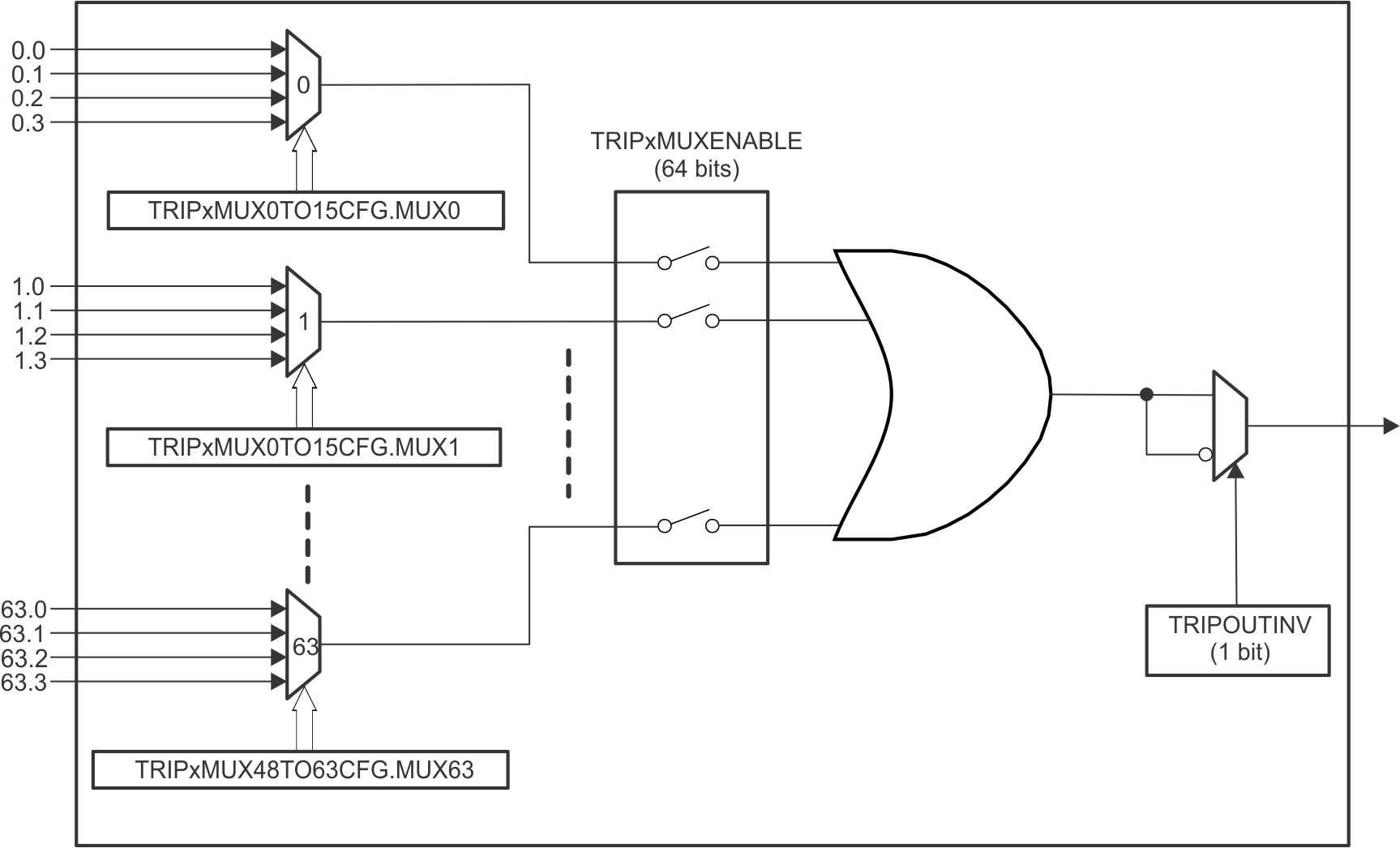SPRUJA3 November 2024 F29H850TU , F29H859TU-Q1
- 1
- Abstract
- Trademarks
- 1Feature Differences Between F2837x, F2838x, F28P65x and F29H85x
- 2C29x Architecture
- 3PCB Design Consideration
-
4Feature Differences for System
Consideration
- 4.1
New Features in F29H85x
- 4.1.1 Analog Subsystem
- 4.1.2 Data Logger and Trace (DLT)
- 4.1.3 Single Edge Nibble Transmission (SENT)
- 4.1.4 Waveform Analyzer Diagnostic (WADI)
- 4.1.5 EPWM
- 4.1.6 Bootrom
- 4.1.7 ERAD
- 4.1.8 XBAR
- 4.1.9 Error Signaling Module (ESM)
- 4.1.10 Error Aggregator
- 4.1.11 Hardware Security Module (HSM)
- 4.1.12 Safe Interconnect End-to-End (E2E) Safing
- 4.1.13 Critical MMR Safing With Parity
- 4.1.14 LPOST
- 4.2 Communication Module Changes
- 4.3 Control Module Changes
- 4.4 Analog Module Differences
- 4.5 Power Management
- 4.6 Memory Module Changes
- 4.7 GPIO Multiplexing Changes
- 4.1
New Features in F29H85x
- 5Software Development with F29H85x
- 6References
4.1.8 XBAR
The crossbars (XBAR) provide flexibility to connect device inputs, outputs, and internal resources in a variety of configurations. F29H85x contains several XBARs, including Input X-BAR, Output X-BAR, CLB X-BAR, ePWM X-BAR, MINDB X-BAR, and ICL X-BAR. In F29H85x, there is an architectural improvement compared to F28 family. Figure 4-4 shows that the input signals are directed into a MUX, where users can only choose one input within the same MUX. However, Figure 4-5 shows that the inputs are grouped (G0...Gx) instead of muxed, which solves the scenario when users want to select multiple inputs within the same group. Now, they can enable any combination of inputs, even if they are within the same group, to be ORed together to produce the output signal of the X-BAR. This architecture is used across all XBAR modules with the exception of Input X-BAR, which has the same architecture as C28 Input X-BAR.
 Figure 4-4 F28P65x ePWM X-BAR Architecture
Figure 4-4 F28P65x ePWM X-BAR Architecture Figure 4-5 F29H85x ePWM X-BAR Architecture
Figure 4-5 F29H85x ePWM X-BAR Architecture